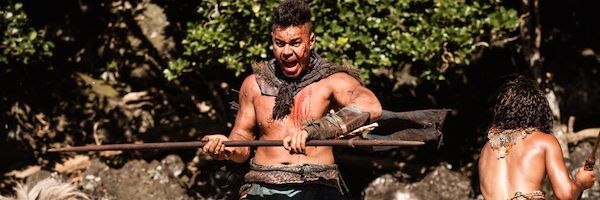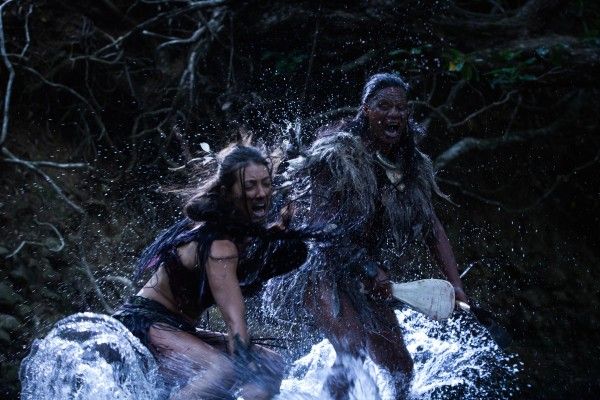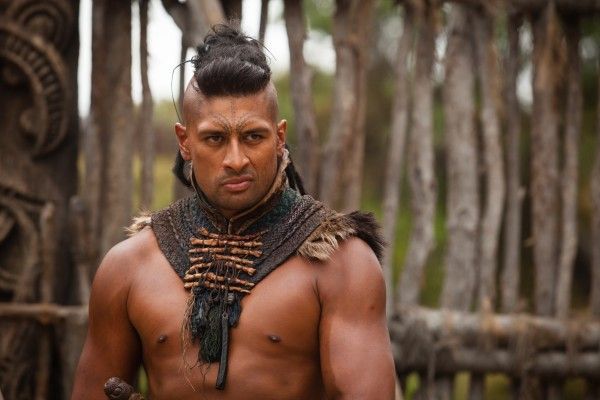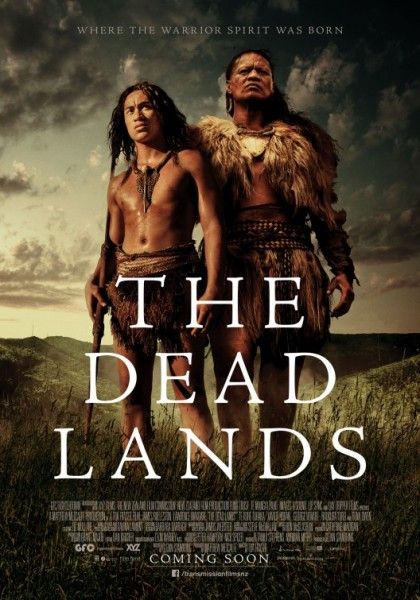There’s a sincerity to Toa Fraser’s martial arts epic The Dead Lands, a Po-faced ability, want, to mix genuine theology in between people swinging fists and sharp sticks at one another. It’s the type of film where a character will slice a man’s belly wide-open, blood gushing forth from within, and then turn his gaze from the body to the heavens and curse them (the Gods/spirits/ancestors) for judging him for such a misdeed. Which is to say – it’s a little bit silly – or more so not afraid to look silly in its very straight-forward attempts to be about something more – about the ways one’s culture binds yet inspires, about the cyclical unending nature of violence and about the spiritual malaise that inevitably results.
Surface value – it’s your standard action revenge thriller. An interim of peace between two warring indigenous tribes is disrupted after the ‘bad tribe’ kills every single member of the ‘good tribe’. Of course, one member of the ‘good tribe’ (always the weakest & youngest) gets away and swears vengeance on those that killed his tribe/friends/family. So he (the young vengeful survivor) follows the “bad tribe” and offs them one-by-one, along the way gaining the help of an experienced fighter who serves as his surrogate father/mentor. The broad strokes of the story are the same as they’ve always been; but it’s in the nuances, the details, that The Dead Lands separates itself from the pack.
The New Zealand Maori culture figures prominently – the movie told entirely in the native tongue. The importance of tribal rules and honor and heritage linger over – this thought of passing on culture, keeping it alive, relevant, and by doing so achieving a sense of immortality, of maintaining a mark on the world, what we pass down in turn giving reason to our existence. Early on, the ‘good’ and doomed chieftain confides to his son a nightmare that has troubled him – his tribe burned to ash, his people scattered or dead, the only vestiges remaining: the dirt beneath his feet. He relays a tale of a once proud and mighty neighboring tribe, which one night completely vanished off the face of this earth. Now all that remains of them are the land they once called home – the “dead lands” as they are now know. Death isn’t the great fear here, but to be forgotten entirely afterwards. It’s through stories, by crafting “legend”, that each character attempts to overcome such a fate. Throughout the picture, characters plead for others to remember them, to tell their story, in essence mythologizing themselves, crafting immortals out of their own flesh and blood.
There’s a darker side to such a self-aggrandizing mythology. Most often the stories we remember, the ones we tell and pass on are steeped in blood and ruin. We immortalize the lives taken and forget those lived. The stories passed on at the outset of the film – of two tribes at war, of bodies unburied and left to rot in hallowed grounds – motivates the killings to follow. Towards the end of the picture, two characters pause mid-fight to comment on the unending cycle of violence they find themselves in: stories of a distant past conflict the foundation for this present fight leading inescapably to some not-so-far-off future skirmish. Why is this cycle of violence the only thing remembered? How can one ever hope to break free?
It’s these ponderous moments that ultimately make The Dead Lands more than just ninety minutes of people pummeling each other to death. The action scenes may actually be the weakest part of the film, cut a bit too choppy, the kinetic verisimilitude of what a fight “feels like” taking precedence over clear, concise choreography. There are some nice bits though – a moonlight fight in a shimmering river gets the closest at finding the dueling beauty and despair of two people hacking each other to the death. There’s just as many tears spilled as blood – and The Dead Lands, believe it or not, is at its best dealing with the emotional turmoil that comes after all the beating/slashing/punching/gutting/kicking/crushing/munching.
But don’t take my word for it; the film has garnered the attention of the maven of modern day action cinema – James Cameron (Titanic, Avatar). At the pre-screening attended, Cameron was on hand to introduce the film, calling The Dead Lands “a great action film.” I actually disagree with the master (in all humility) – The Dead Lands is a decent action film… but a very good drama. For it’s in the moments outside of the violence, the conversations between father and son, between foes and allies alike that the movie truly seems to come alive and transcend its B-movie roots. That is until the next fight scene is needed.
Grade: B
The Dead Lands opens in select theaters Friday.




